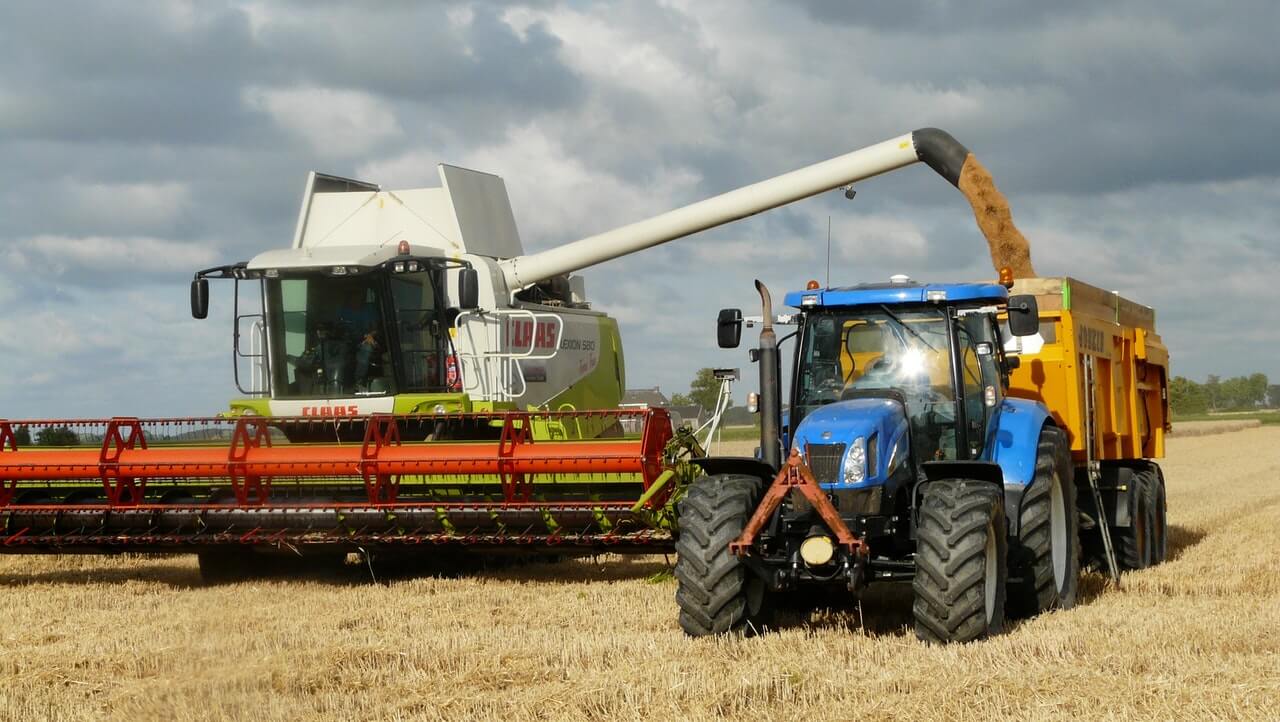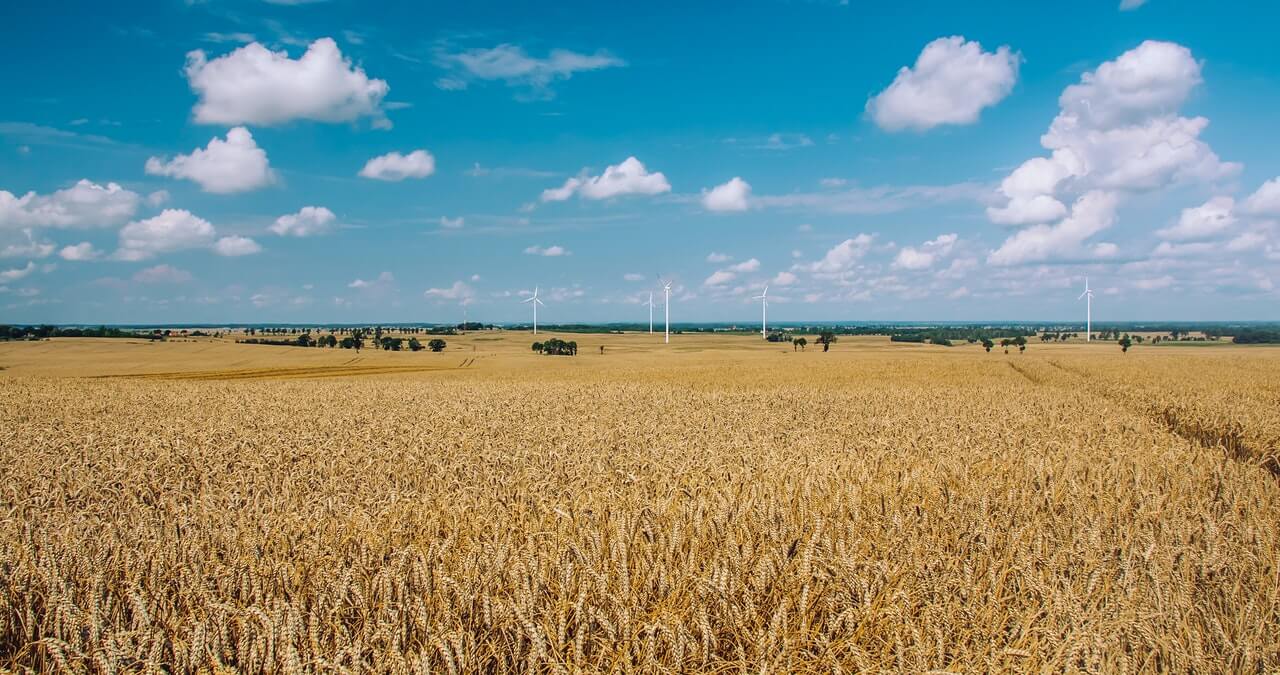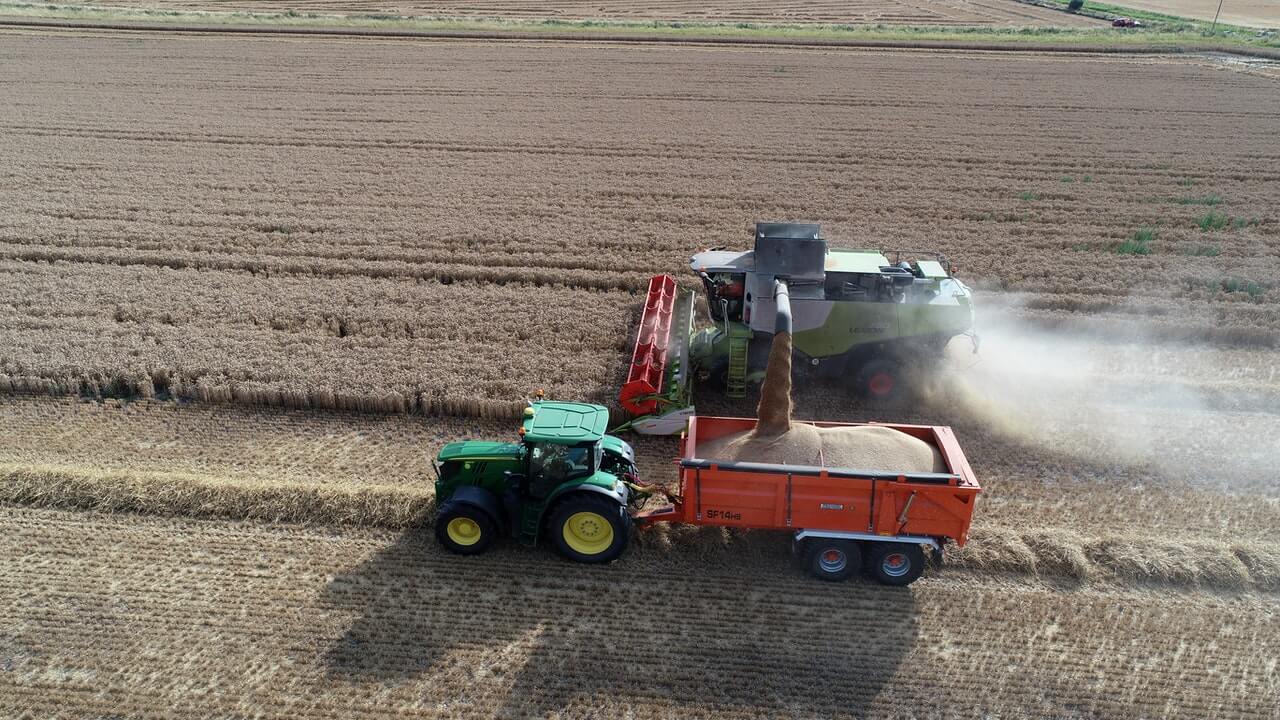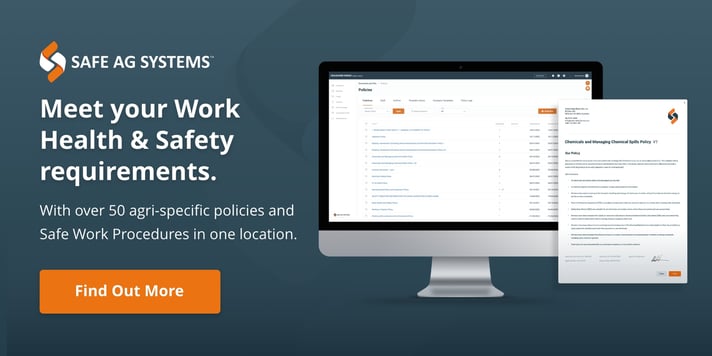As we near the seeding season for agricultural farms, it's a great time to get everything sorted out for a safe and successful kickoff to the season.
Like all commodities in Agriculture, grain farming has its own hazards. Some of these hazards are unique and some are common throughout the industry. According to the Grains Research and Development Corporation (GRDC), a corporate Commonwealth entity, in 2022-23 the Australian grain industry reached $31.1 billion in gross value of production. The 2022-23 crop season marked two consecutive record-breaking years, with yields reaching 70.8 million tonnes, following a 66.5 million tonne crop in 2021-22.
The grain business sector directly employs over 100,000 people, managing 22 million hectares of land. Grain accounts for approximately 21% of the Australian agriculture sector's gross value of production. With an estimated 23,000 grain farms around Australia, we thought we’d address the top 5 hazards that can affect grain farmers and their workers. Did you know there are three distinct grain regions around Australia;
The Northern region which includes Queensland and New South Wales which tend to produce wheat, barley, sorghum, maize, oilseeds, tropical and winter-growing pulses.
The Southern region which includes Victoria, Tasmania and South Australia where crop production varies according to the GRDC with many mixed farming enterprises.
The Western region consists of Western Australia which is dominated by wheat, barley, canola and lupins.
Machinery and Equipment
When it comes to grain farming, machinery and equipment are a necessity to get the job done. Each stage of grain or crop farming requires mechanical assistance from seeding or planting through to harvest. Without machinery such as headers or combine harvesters, daily tasks out in the field at such a large scale would be impossible. Some of the most common mechanical hazards for grain production are tractors, combine harvesters, chaser bins, motorcycles, quad bikes, augers, grain bins, silos, and spraying equipment.
Harvesters present a variety of risks and hazards in farming as they are often involved in numerous agricultural injuries or fatalities. Operators run the risk of falling from the cab when mounting or dismounting, a person can become entangled, run-over, trapped, or worse if they come into contact with the knife, reel, or stripper rotor. During harvest there is a potential of harvester fires often related to poorly maintained machinery, overheating and lack of firefighting preparation.
If you have ever read our blogs relating to hazards and risks in grain farming, you would have come across multiple articles where we discuss the horrors of an unguarded auger. A common injury arises when a hand, arm, foot, or leg becomes entangled, this type of injury can cause lacerations, broken bones, and also possible amputation of limbs.
There are several reasonably practicable control measures that can be implemented when working with augers, harvesters, and other farm machinery. Ensure the use of guards, especially on chutes, channels, belts and pulleys, augers should be inspected to confirm they are in good condition before use (if not they should be tagged out). Do not use your hands or feet to clear blockages, complete regularly servicing and maintenance, as well as making certain that your workers are properly trained for any machinery or equipment they are required to use.

Grain storage and confined spaces
Did you know that engulfment by grain can occur when field bins collapse? Engulfment can also occur with any flowing grain. Grain storage, bin or silo entrapments are one of the most identified hazards associated with grain farming, usually occurring when shifting grain or unloading. Grain storage bins and silos are designed to unload from the bottom, often against better judgement a worker will enter a bin to loosen a blockage whilst equipment may still be running.
For example, a grain auger is used to move the grain from the bottom of a grain bin to the outer edge and into a transport vehicle. When the auger is operating, grain will flow from the bin, directly over the outlet to the unloading auger, positioned in the centre of the bin floor. Ultimately this movement creates a funnel flow where a person can be pulled knee deep in seconds.
Grain storage bins or silos are confined spaces that don’t just pose the risk of engulfment, they can also cause asphyxiation or suffocation. Since silos are designed to keep grain dry, there is a lack of oxygen resulting in potential exposure to noxious gases, explosive gases, and dusts.
Under WHS or OHS regulations it is a requirement that a risk assessment is completed before work is undertaken inside a silo or other confined space. To control risks, you should inform others with the use of proper warning signs, test oxygen levels before entering, communicate emergency procedures, establish entry and exit procedures to and from the confined space, and confirm those entering the confined space have had the proper training and correct PPE supplied.
Chemicals
Chemicals are often used in crop and grain farming, from seed treatment to pest control, crop/grain protection and rodent control. These chemicals pose a risk of exposure for those using them and by-standers through mixing, application, and storage.
There are a few ways to reduce or control the risk of exposure to chemicals. Check your hoses and connections to ensure there are no cracks or leaks in your system. Store chemicals in their original containers and label them correctly, do not pour them into smaller bottles. Store chemicals in a locked, well-ventilated shed with floors that will contain spills. Confirm that all people applying chemicals have been properly trained and have the required Chemical User Accreditations. You, as a PCBU, are also required to provide PPE such as boots, face masks, gloves, goggles, etc. that offer enhanced, higher-level control measures. As an agribusiness you should also provide any instructions for proper use of supplied PPE as well as an appropriate place to store PPE when not in use, away from chemicals.

Fatigue
We’re all guilty of it, working longer hours than we should when things get busy. Unfortunately, fatigue can affect anyone and working long days without adequate breaks increases your risk of making a mistake. On farm you are in control of some substantially heavy machines and vehicles, operators run the risk of collisions with other machines, stationary objects such as trees, sheds, and power poles or overhead powerlines. Fatigue impedes on your normal daily activities and functions, impacting your alertness and slowing reaction times. The risks associated with fatigue are even greater at night.
Don’t be afraid to talk about fatigue with your workers. Whilst you can’t manage how people sleep, you can make some adjustments to support a healthy work environment by scheduling regular breaks, controlling shift durations (it is recommended that they are kept at less than 10 hours), and try to limit work between 8pm to 8am where possible.
Biosecurity
For grain and crop farmers, biosecurity threats such as new pests entering their properties are a daily risk. Whilst not specifically related to health and safety of a worker, the result of a biosecurity threat can cause for concern, large amounts of stress and negatively impacting a person’s mental wellbeing.
Farm Biosecurity, recommends following 6 steps that can be implemented in day-to-day practice on farm, to reduce the risk of spreading pests and diseases.
- Be aware of biosecurity threats – as part of your induction process, explain to new workers hygiene requirements for people, equipment and vehicles.
- Ensure seed is pest free – keep records of seed purchased and ensure you are sourcing them from a reputable source.
- Keep it clean – prevent the entry and movement of pests onto your property so ensure you have set up a decontamination process as people, vehicles and equipment enter or leave your farm. It is also recommended to have a designated visitor’s area.
- Check your crop – know the visual appearance of your crops, maintaining written and photographic records.
- Abide by the law – be aware of laws and regulations.
- Report anything unusual - If you suspect a new pest, report it to the Exotic Plant Pest Hotline 1800 084 881.

Where is the industry going?
The 2022-23 crop season witnessed two consecutive years setting new records, with yields soaring to 70.8 million tonnes, following a record-breaking 66.5 million tonne crop in 2021-22. The grain business sector directly employs over 100,000 people, managing 22 million hectares of land. Grain accounts for approximately 21% of the Australian agriculture sector's gross value of production. Crop farmers have boosted their output by using new tech and methods, resulting in higher production.
Topics: Keep Safe around Grain
Disclaimer: Content on this website may be of relevance to users outside of Australia, but content links and examples are specific to Australia. Please check with your local authority for your country and industry requirements.












